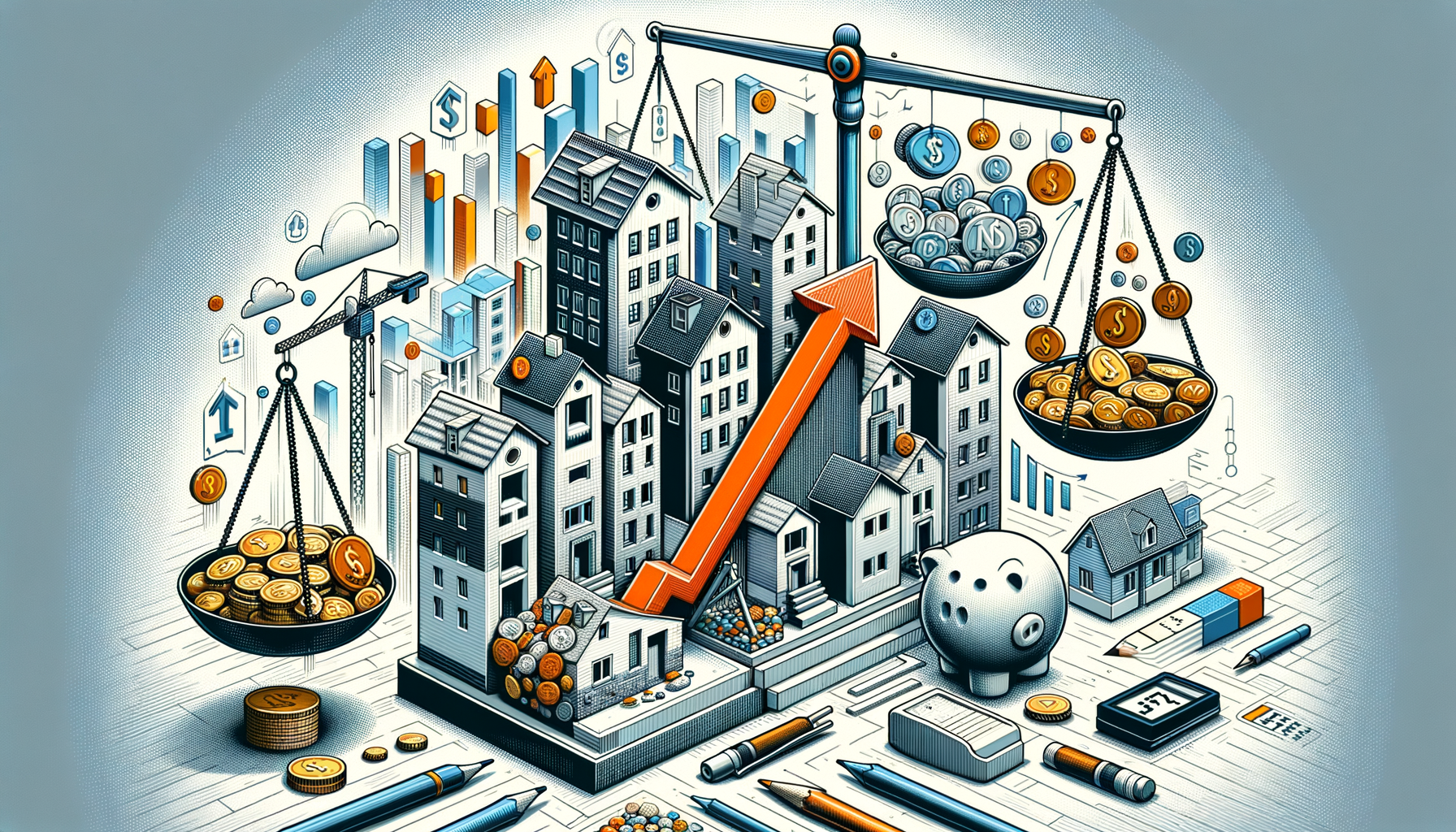“Unprecedented Low Mortgage Rates: A Dive into the Dip to 6.6% Since May 2023”

The housing market is always an interesting indicator to keep one’s eye on, with its fluctuations playing a significant part in both overall economic trends and individual homeowners’ or aspiring homeowners’ decisions. Recently, a significant event marked a downward shift that grabbed everyone’s attention: mortgage rates have hit their lowest mark since May 2023, standing at an impressive 6.6%.
Now, you might be wondering, “What does this all mean?” To answer that question, let’s first understand what mortgage rates are.
Mortgage rates essentially reflect the interest that you’ll pay to borrow money for a home. It’s determined by a complex interplay between the global economy, the U.S. economy, inflation, and a host of other factors, including government policies and overall sentiment in the market. A lower rate eventually makes home loans cheaper, considerably easing the financial burden for those looking to purchase or refinance a house.
So, when we say the mortgage rate is at a record-low of 6.6%, it means that the cost of borrowing is significantly less than what it was before, indicating a favorable condition to potential homeowners who may find it more financially manageable to stake a claim in the housing market.
A dive into what led to this drop reveals a story of how economic trends and policies all come together. Lately, various economic indices and signs, such as the Employment Cost Index (ECI), a measure of wage growth, and inflation trends, have painted a grim picture that led to the decision-makers deciding to backpedal on interest rates, thus nudging it downwards to ease economic pressures.
One of these key decision-makers is the Federal Reserve, which is instrumental in setting the trajectory of interest rates in the U.S. Given the financial uncertainty and weak economic indicators, they felt the need to stabilize the situation by lowering interest rates.
In addition, one cannot overlook the impact of the Covid-19 pandemic, which, since 2020, had significantly shaken up the global and national economies. As things appear to stabilize and we approach a post-pandemic era, this decrease in mortgage rates can be seen as an incentive to encourage home buying and stimulate the housing market.
At the same time, policymakers’ attempts to curb inflation also play a role in this development. Inflation, which is the rate at which the general level of prices for goods and services is rising, has been a significant concern lately, with its continuous upward cycle. By manipulating mortgage rates, the authorities add an additional tool to their armory aimed at alleviating the impact of inflation, thereby stabilizing the economy.
This doesn’t mean, however, that the lowered mortgage rate is devoid of any drawbacks. While it certainly aids potential homebuyers with more manageable loan payments, it isn’t ideal for savers or those investing in retirement funds, as the reduced interest rates lead to diminished returns on savings.
The impact of this trend extends even wider — affecting not only individual mortgage borrowers some investors but also the broader economy. With cheaper home loans comes an increase in demand for houses, which serves to reinvigorate the housing market. Developers and construction companies experience a boost in business, which in turn leads to increased employment rates and expansion in related industries, such as construction materials and home goods, furnishing a positive cycle of growth.
However, while it imbues homebuyers with better purchasing power and revives the housing industry, an escalated demand for homes can potentially inflate housing prices, leading to affordability issues for some buyers, particularly those on the lower end of the income spectrum. Underlying this is also the fear of creating a housing bubble – a quick rise in housing prices followed by a collapse.
Much like any other market, the real estate market is a consistently fluctuating entity driven by numerous factors, with mortgage rates being a significant one. Therefore, understanding and interpreting such trends is crucial for stakeholders in this market – from prospective homebuyers to investors to real estate professionals.
Savvy potential homebuyers, those considering refinancing their homes, or anyone interested in the housing market should keep a pulse on these rates. These mortgage rates at their lowest level since 2023 could present a golden opportunity for many. However, it’s always vital to remember that all investments come with risks and exposure to fluctuating market conditions. So, seeking assistance from financial advisors and professionals in making informed, thoroughly considered choices is as important as ever.
In summary, the housing market, with all its ebbs and flows, continues to play a critical role in the overall economic condition of the country. While the reduction in mortgage rates to 6.6% has potentially unlocked the door to homeownership for many, simultaneously, it has thrown in a new set of dynamics and challenges. As the market continues to respond and adapt to this change, it presents an engaging, somewhat complex picture for financial experts, policy-makers, and industry stakeholders who are maneuvering the housing landscape in this new terrain. As always, keeping a keen eye on these shifts will be crucial in predicting future trends, understanding their impact, and making the most out of them.
